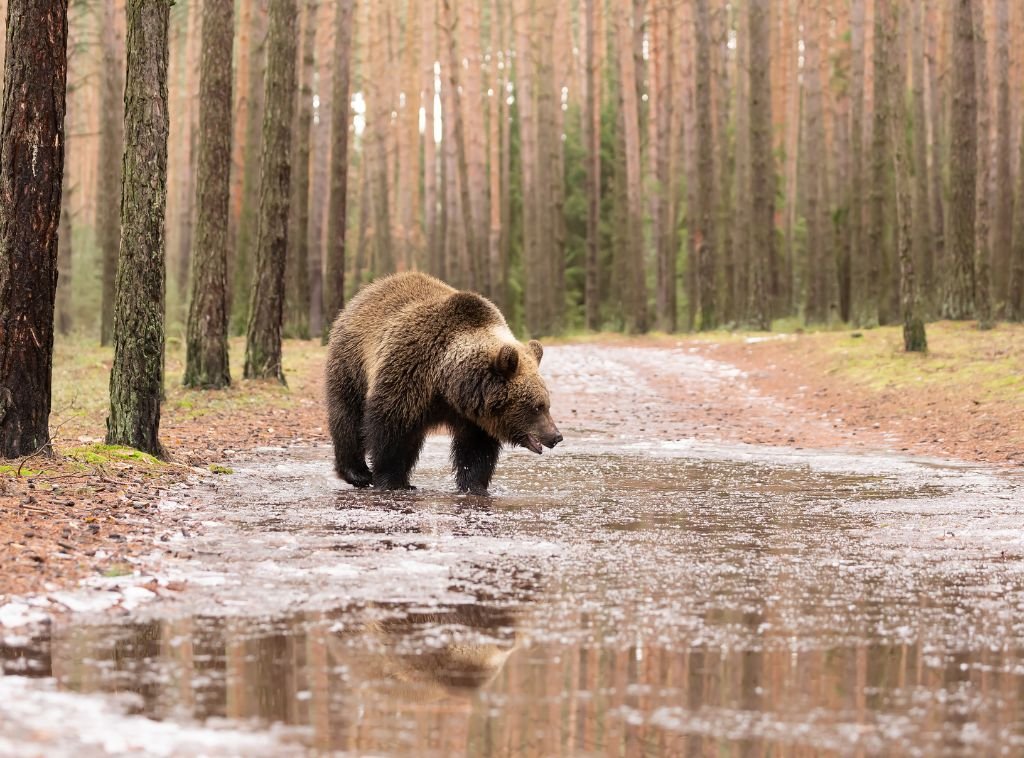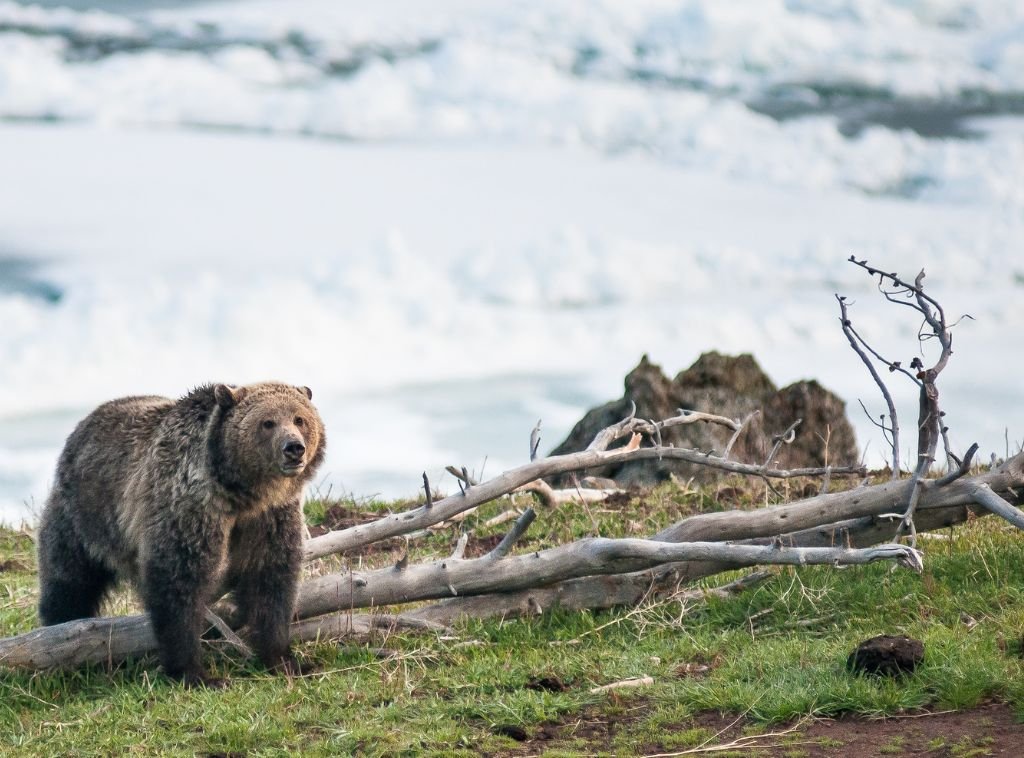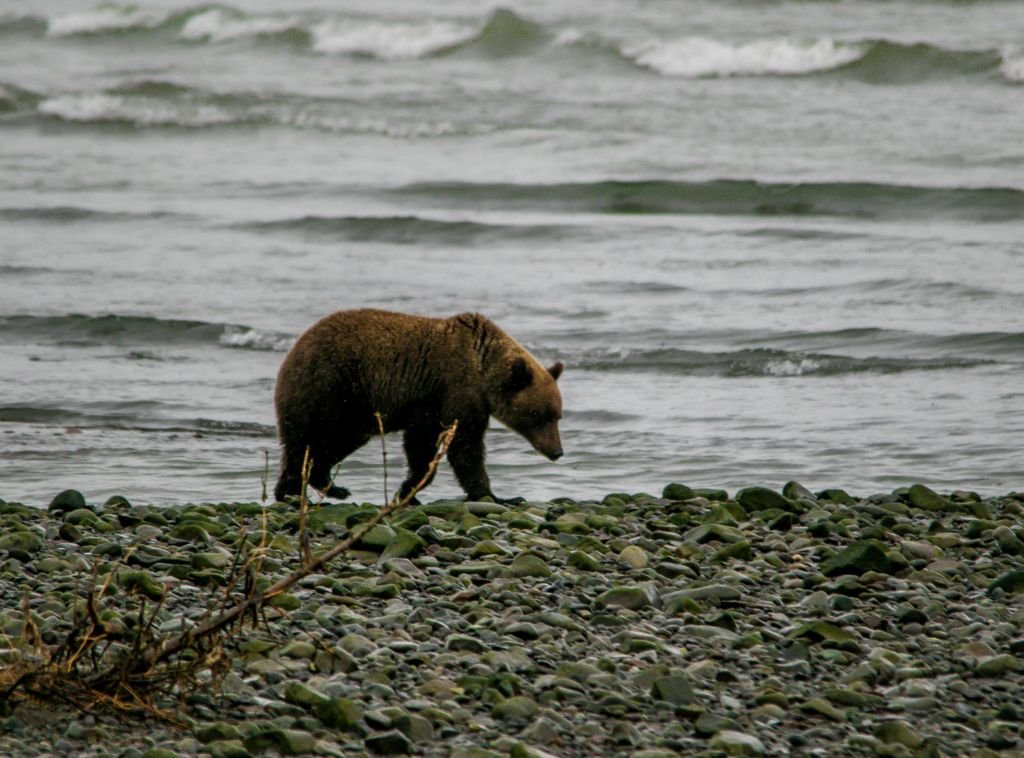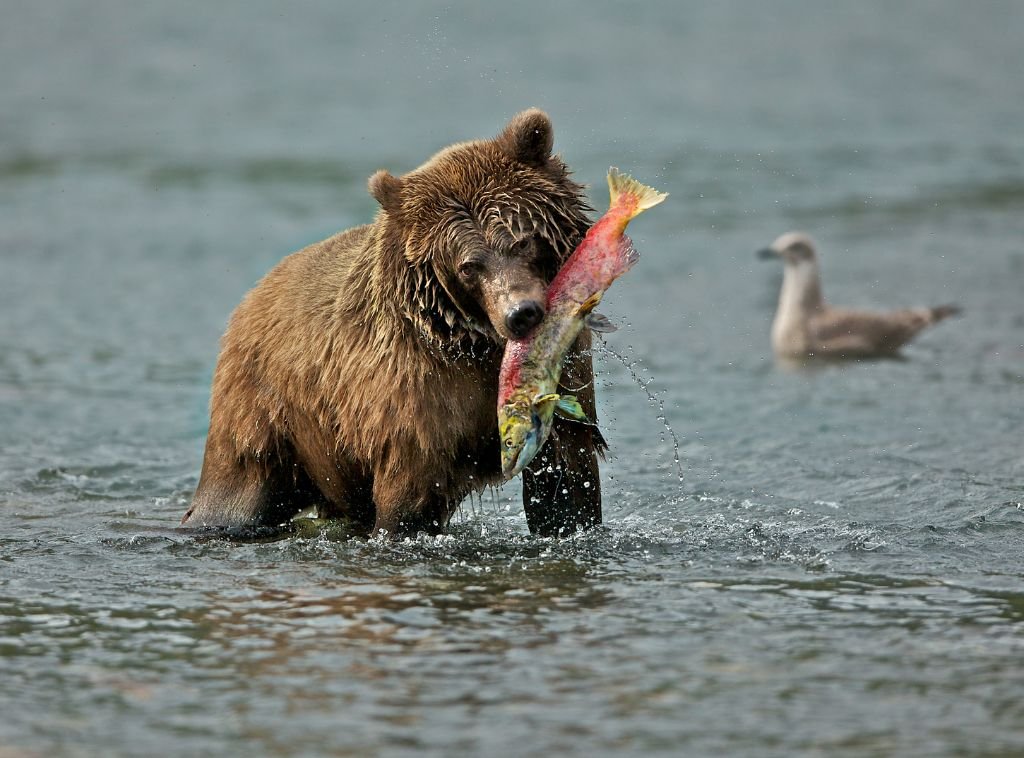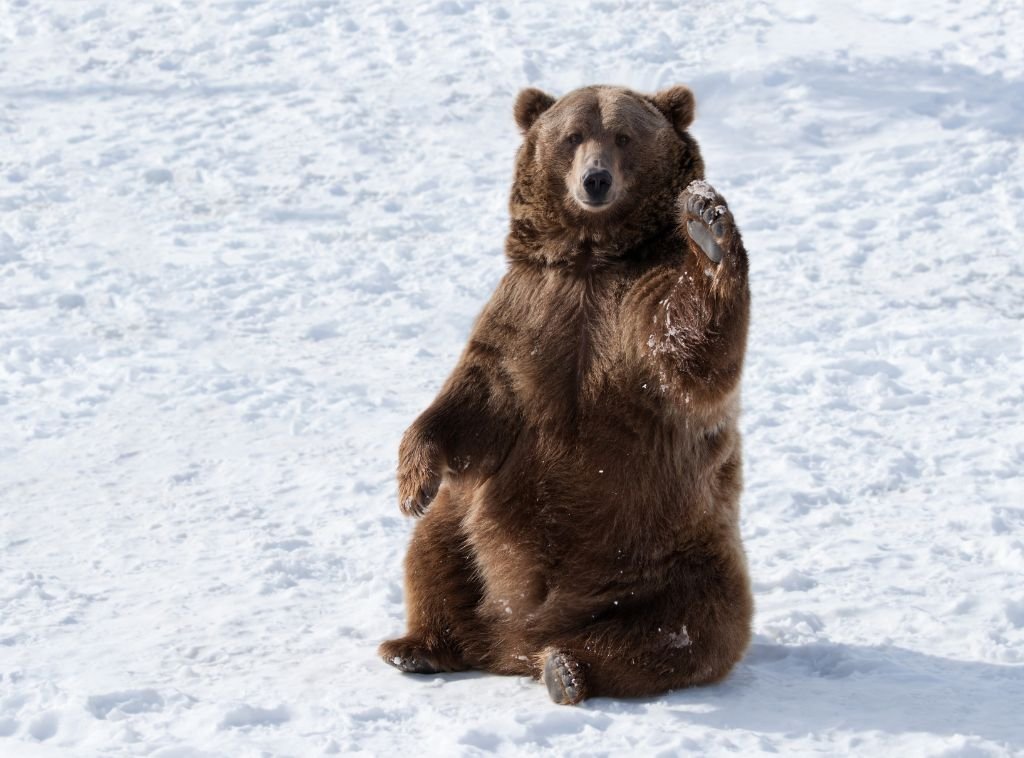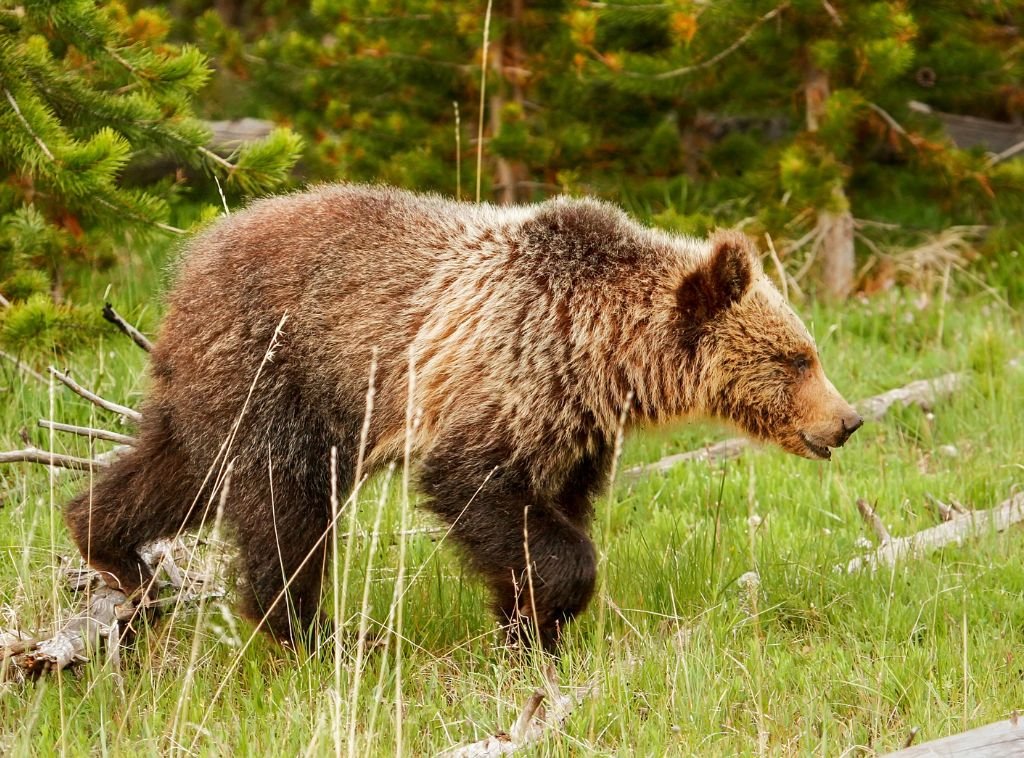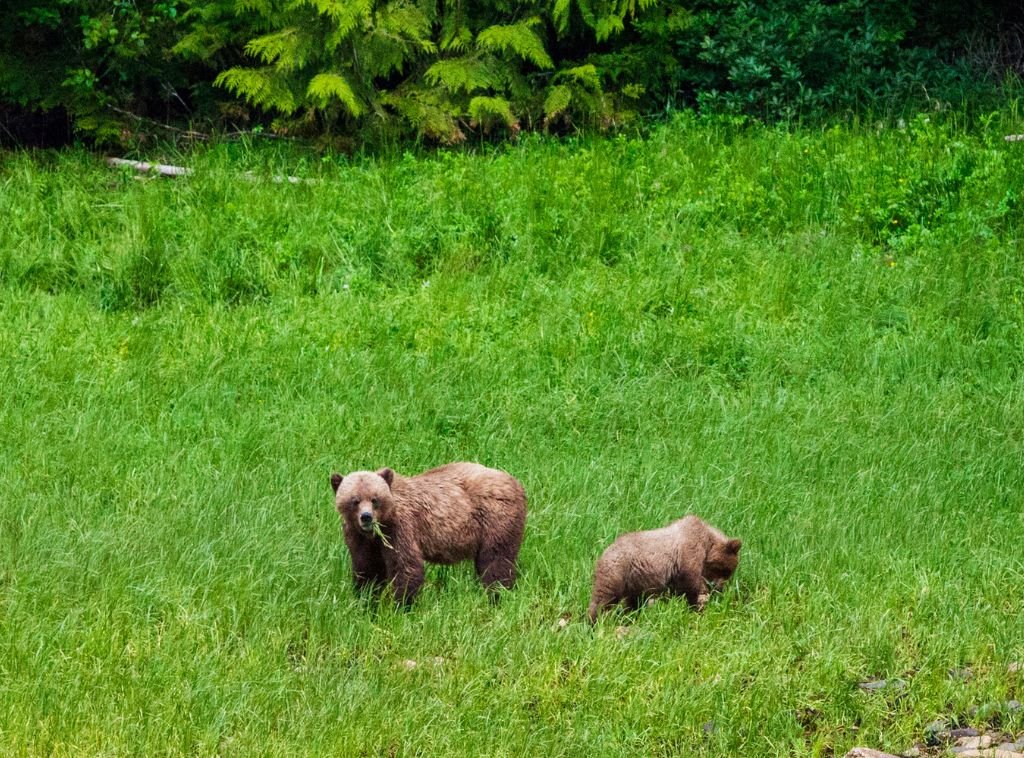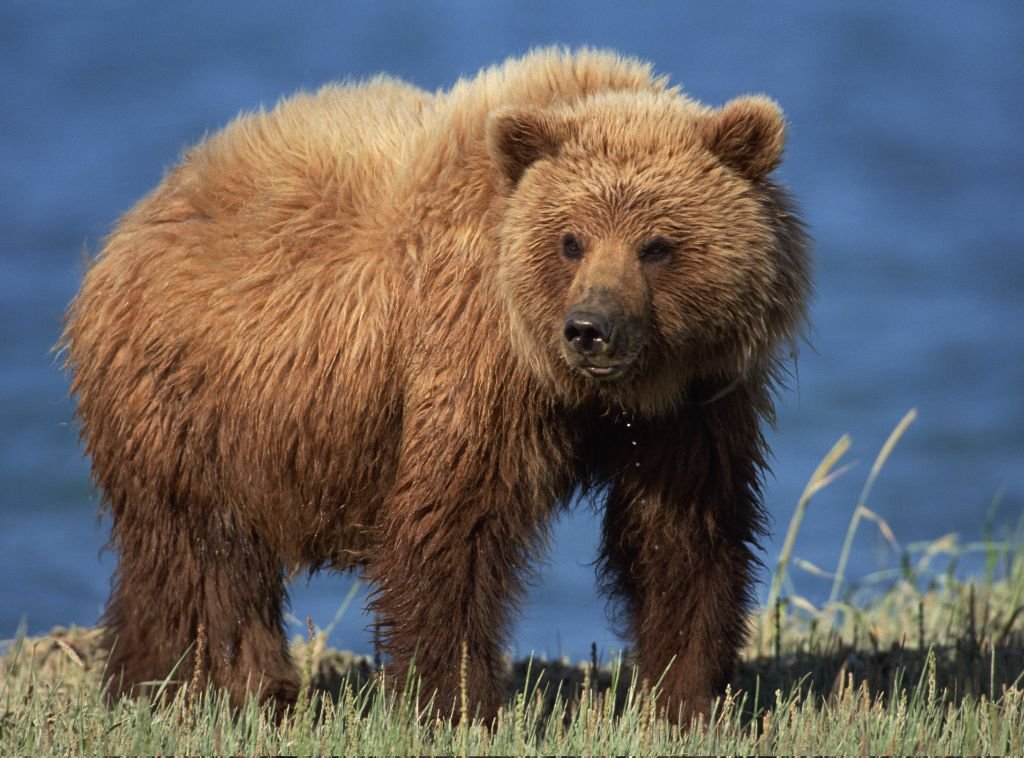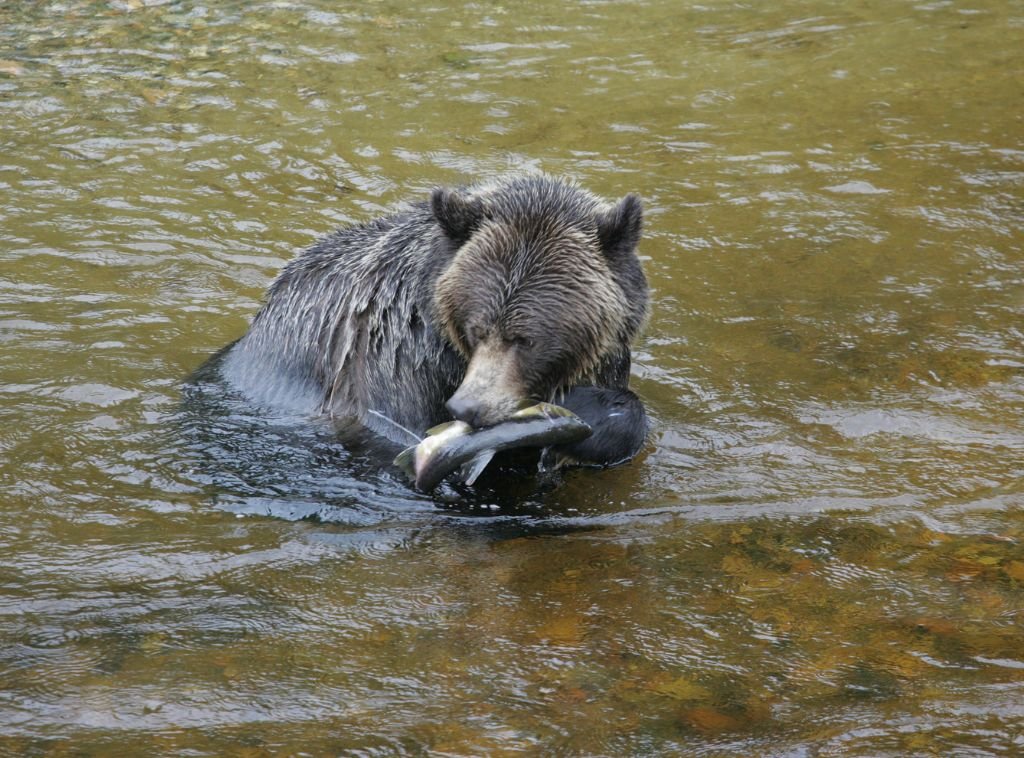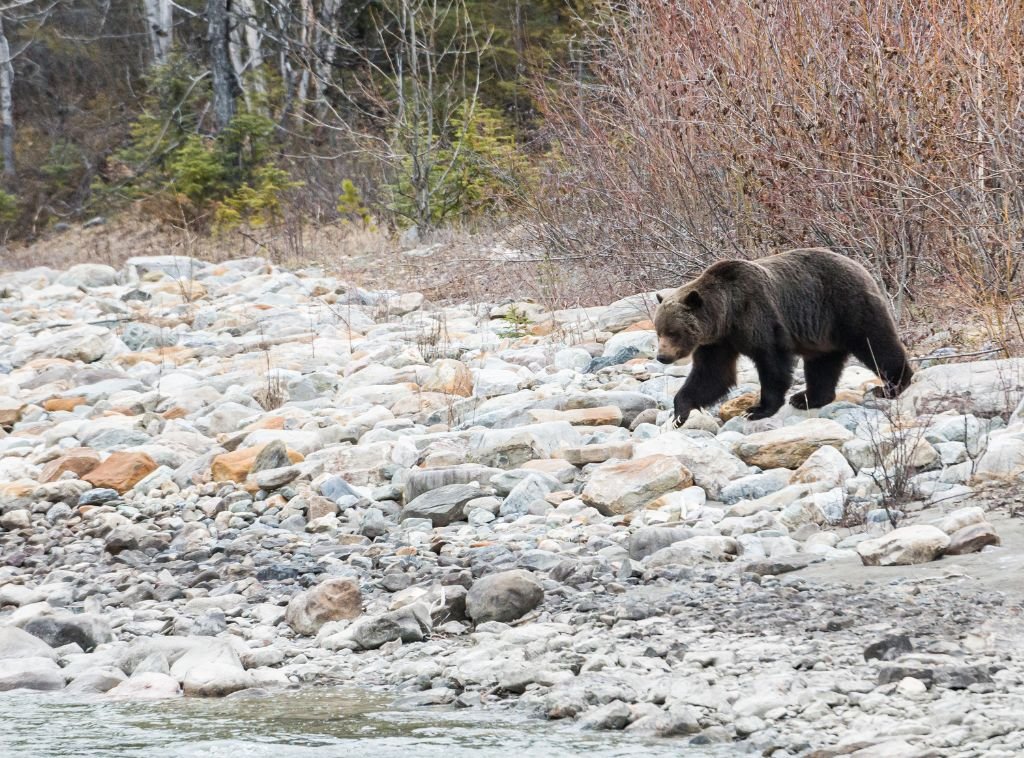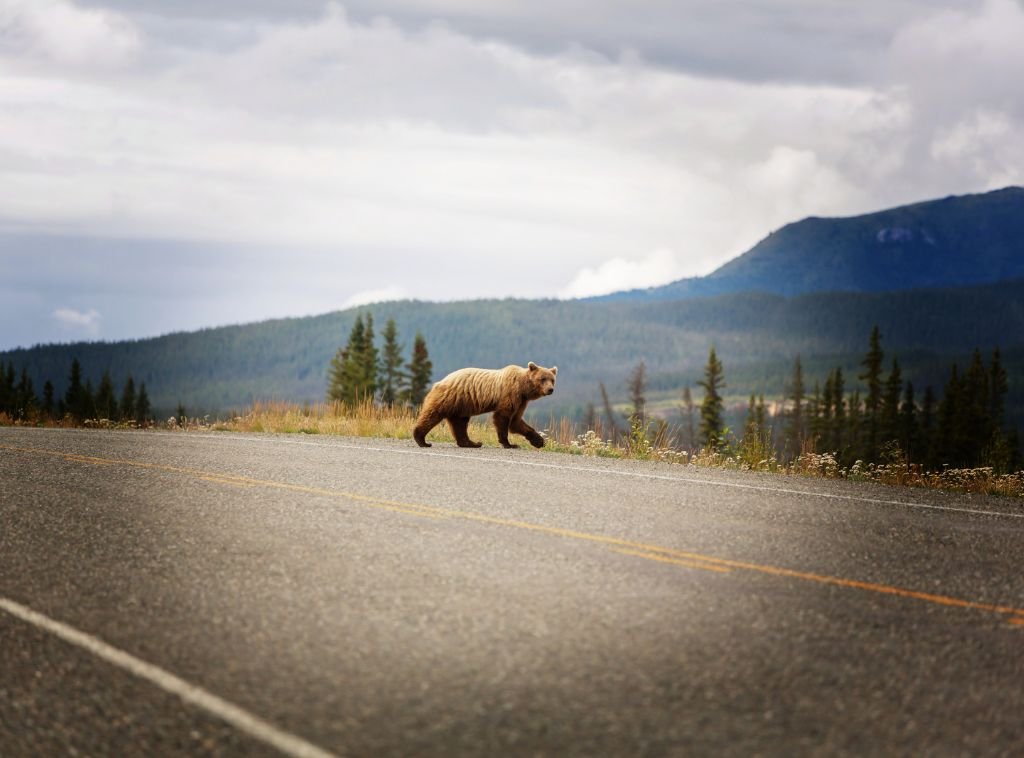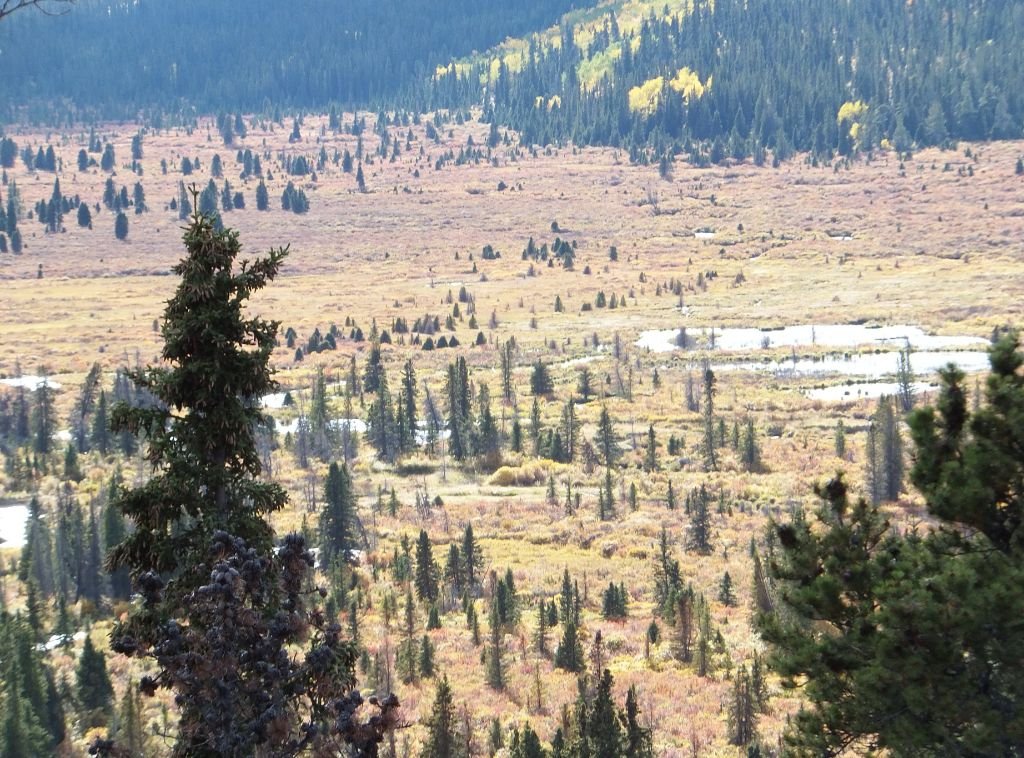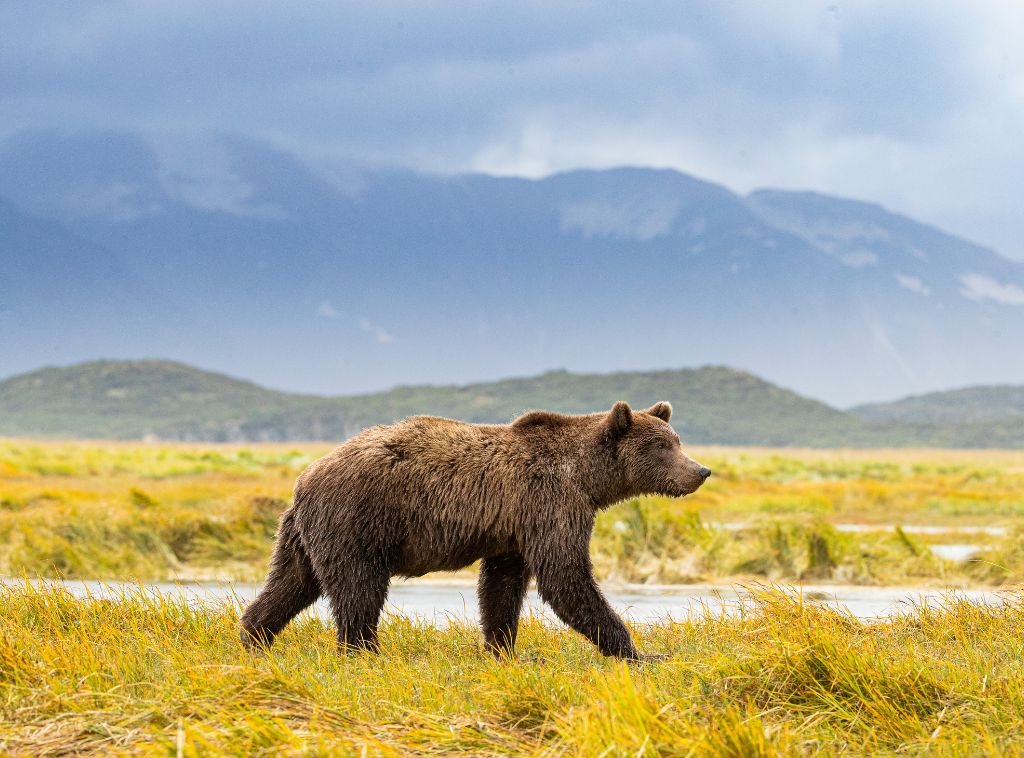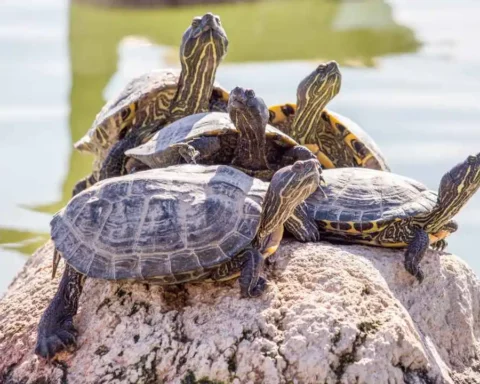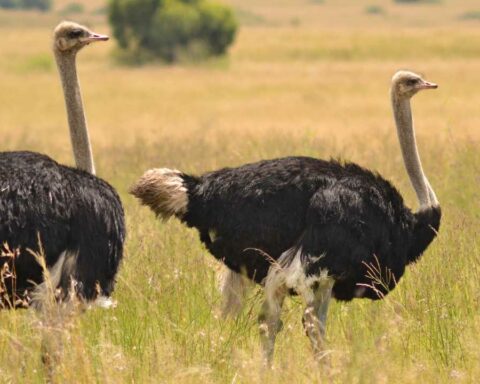The grizzly bear, an iconic symbol of North America’s wild landscapes, has long captured the imagination of nature enthusiasts and conservationists alike. With their powerful presence and awe-inspiring strength, these majestic creatures play a crucial role in maintaining the balance of the ecosystems they inhabit. However, human impacts have led to a reduction in their range and population, making grizzly bear conservation more important than ever. Lets find out where do grizzly bears live and explore their diverse habitats and the factors that influence their distribution across North America. We will also discuss the human activities that have impacted their habitats and examine the ongoing conservation efforts aimed at ensuring the survival of this magnificent species.
Where Do Grizzly Bears Live
Grizzly Bear Habitats
Grizzly bears are highly adaptable creatures and can be found in a diverse range of habitats across North America. These environments provide the bears with the necessary resources for their survival, such as food, water, and shelter. Some of the most common habitats occupied by grizzly bears include:
Forests:
Grizzlies are often found in dense forests and wooded areas, particularly in coniferous and mixed forests. These habitats offer ample cover and shelter, as well as abundant food sources, such as berries, nuts, and small mammals. Forests also provide grizzly bears with materials for constructing dens, which they use for hibernation during the winter months.
Mountain Ranges:
Grizzly bears can be found in rugged mountainous areas, where they take advantage of the varied terrain for foraging and denning. Mountain meadows, high-altitude plateaus, and alpine tundra provide a rich array of vegetation, insects, and small mammals for the bears to feed on. Additionally, the isolation of these regions can offer a degree of protection from human encroachment.
Coastal Regions:
In some parts of their range, grizzly bears are known to inhabit coastal areas, particularly in Alaska and British Columbia. These coastal habitats provide a unique food source for the bears: spawning salmon. Grizzlies gather along rivers and streams during the salmon runs, where they can catch and consume large quantities of fish, which are an essential source of protein and fat.
Wetlands and Riparian Zones:
Grizzly bears are often found in wetland and riparian habitats, as these environments offer abundant plant and animal life. These areas provide the bears with various food sources, such as sedges, grasses, berries, and fish. Furthermore, wetlands and riparian zones serve as important corridors for grizzly bears to move between different habitat types.
Tundra:
In the far northern parts of their range, grizzly bears can be found in the Arctic tundra. Though the harsh, treeless landscape may seem inhospitable, grizzly bears are able to survive by preying on caribou, muskoxen, and ground squirrels, as well as foraging for roots, tubers, and berries.
Geographic Distribution of Grizzly Bears
The grizzly bear’s historical range was extensive, covering much of western North America from the Great Plains to the Pacific coast, and from central Mexico to the Arctic Ocean. However, due to habitat loss, human encroachment, and hunting pressures, the grizzly bear’s distribution has significantly contracted over the past few centuries.
Today, grizzly bears are primarily found in three major regions of North America:
The United States:
In the contiguous United States, grizzly bear populations are now limited to a few isolated areas. The largest population is found in the Greater Yellowstone Ecosystem, which spans parts of Wyoming, Montana, and Idaho. Other smaller populations are present in Montana’s Northern Continental Divide Ecosystem, the Bitterroot Ecosystem along the Montana-Idaho border, and the North Cascades Ecosystem in Washington State. These populations represent a small fraction of the grizzly bears’ original range in the United States.
Conservation efforts in these areas are focused on habitat preservation, reducing human-bear conflicts, and maintaining genetic diversity through the potential reintroduction of grizzly bears to suitable habitats. In the United States, grizzly bears are listed as threatened under the Endangered Species Act, which ensures that they receive federal protection and conservation measures.
Canada:
Grizzly bears are more widely distributed in Canada, with populations found in the western provinces of British Columbia, Alberta, Yukon, and the Northwest Territories. The Canadian Rockies and the coastal regions of British Columbia, where salmon runs attract grizzly bears, host some of the highest densities of the species. Additionally, the vast boreal forests and subarctic regions of northern Canada provide crucial habitat for grizzly bears.
In Canada, grizzly bears are considered a species of special concern under the Species at Risk Act, and provincial conservation efforts focus on habitat protection, population monitoring, and sustainable hunting practices. Organizations such as Parks Canada and provincial wildlife agencies work together to ensure the long-term survival of grizzly bears in the country. In Canada, where grizzly bears are a common sight, visitors can find suitable car rentals at Rental24h.com to travel comfortably across these expansive regions
Alaska:
Alaska is home to a significant population of grizzly bears, estimated to be around 30,000 individuals. The bears are found across most of the state, from the Arctic National Wildlife Refuge in the north to the Kodiak Archipelago in the south. The coastal regions of Alaska, such as the Alaska Peninsula, support some of the largest grizzly bears due to the abundance of salmon and other marine resources.
In Alaska, grizzly bear management falls under the jurisdiction of the Alaska Department of Fish and Game, which implements conservation measures, such as regulated hunting seasons and habitat protection, to ensure the long-term stability of grizzly bear populations.
Environmental Factors Influencing Grizzly Bear Distribution
Grizzly bear distribution is influenced by various environmental factors that impact their ability to find food, water, and shelter. As highly adaptable creatures, grizzly bears are able to occupy a wide range of habitats, but certain factors can either attract them to an area or cause them to avoid it. Some key environmental factors influencing grizzly bear distribution include:
Food Availability:
Grizzly bears are omnivorous and require a diverse diet to meet their nutritional needs. The availability of food sources, such as berries, nuts, insects, fish, and ungulates, plays a significant role in determining where grizzly bears choose to establish their home range. In areas with abundant and diverse food resources, grizzly bears are more likely to thrive.
Water Access:
Grizzly bears require access to fresh water for drinking and foraging. Proximity to rivers, streams, and lakes can attract grizzly bears, as these water sources support fish populations and the growth of riparian vegetation, both of which are important components of the bears’ diet.
Habitat Quality:
Grizzly bears need suitable habitat for denning, foraging, and raising their cubs. Dense forests, mountain ranges, and tundra provide the necessary cover, shelter, and food resources for grizzly bears to thrive. Habitat quality can be impacted by factors such as human development, logging, and climate change, which can lead to habitat loss or degradation, ultimately affecting grizzly bear distribution.
Climate and Seasonality:
Grizzly bears are well-adapted to a wide range of climatic conditions, but temperature, precipitation, and seasonality can impact their distribution. For example, grizzly bears may move to higher elevations during the summer months to escape heat and find cooler temperatures. In contrast, during the winter months, bears hibernate in dens, usually located in areas with adequate snow cover to provide insulation.
Human Activity:
Human development, such as roads, agriculture, and urbanization, can fragment grizzly bear habitat and limit their distribution. Grizzly bears typically avoid areas with high levels of human activity due to the increased risk of human-bear conflicts and the disruption of their natural behaviors. Conservation efforts that focus on preserving and connecting grizzly bear habitats can help mitigate the impact of human activity on their distribution.
Human Impact on Grizzly Bear Habitats
Human activities have had a significant impact on grizzly bear habitats over the past few centuries, leading to a reduction in the species’ range and population size. Some of the key human impacts on grizzly bear habitats include:
Habitat Loss and Fragmentation:
Urbanization, agriculture, logging, and infrastructure development, such as roads and dams, have led to the loss and fragmentation of grizzly bear habitats. As their habitats become more isolated, grizzly bears face challenges in finding food, water, and suitable denning sites. Fragmentation can also lead to genetic isolation and reduced genetic diversity among populations, as bears are unable to disperse and interbreed with other groups.
Human-Bear Conflicts:
As human populations expand into grizzly bear habitats, the likelihood of human-bear conflicts increases. Grizzly bears may be attracted to human settlements in search of food, leading to encounters that can result in injury or death for both bears and humans. Additionally, bears that become habituated to human food sources may lose their natural foraging skills and become more prone to conflicts.
Hunting and Poaching:
Overhunting and poaching have historically been significant threats to grizzly bear populations. Although hunting is now regulated in many areas, illegal poaching and the accidental killing of grizzly bears by hunters targeting other species still pose a threat to their survival.
Climate Change:
Climate change has wide-ranging effects on grizzly bear habitats, such as altering the distribution and abundance of their food sources, impacting denning conditions, and exacerbating the frequency and severity of wildfires. As the climate continues to change, grizzly bears may be forced to adapt to new conditions or face declines in their populations.
Pollution and Contamination:
Pollution from industrial activities, mining, and agricultural runoff can contaminate grizzly bear habitats, affecting the quality of water and food sources. Contaminated food and water can lead to health problems for grizzly bears and may impact their reproductive success.
By implementing effective conservation measures, such as habitat restoration, sustainable land-use planning, and public education, we can help minimize the negative effects of human activity on grizzly bears and support their continued existence in the wild.
Grizzly Bear Conservation Efforts
Conserving grizzly bear populations and their habitats is crucial to maintaining a healthy ecosystem and preserving the rich biodiversity of North America. Numerous organizations, governments, and individuals are working together to implement effective conservation measures to ensure the long-term survival of grizzly bears. Some key grizzly bear conservation efforts include:
Habitat Protection and Restoration:
Preserving and restoring grizzly bear habitats is essential to the species’ survival. This can be achieved through the establishment of protected areas, such as national parks, wildlife reserves, and wilderness areas, as well as the implementation of sustainable land-use practices that minimize habitat fragmentation and degradation.
Wildlife Corridors:
To maintain genetic diversity and prevent population isolation, it is important to establish and maintain wildlife corridors that connect fragmented grizzly bear habitats. These corridors allow bears to move safely between different habitats, facilitating gene flow and reducing the risk of inbreeding.
Human-Bear Conflict Mitigation:
Reducing human-bear conflicts is crucial for the protection of both grizzly bears and human communities. This can be achieved through public education campaigns, bear-proof waste management systems, and the implementation of non-lethal deterrents, such as electric fencing and bear spray.
Monitoring and Research:
Ongoing monitoring and research are essential for understanding grizzly bear populations, their habitats, and the challenges they face. Data collected through population surveys, habitat assessments, and studies on bear behavior and ecology can inform and improve conservation strategies.
Legal Protections:
Ensuring that grizzly bears receive adequate legal protection is critical for their conservation. In the United States, grizzly bears are listed as threatened under the Endangered Species Act, which provides them with federal protection and mandates the development of recovery plans. In Canada, grizzly bears are considered a species of special concern under the Species at Risk Act, which requires the development of management plans to address potential threats.
Community Involvement:
Engaging local communities in grizzly bear conservation efforts is crucial for long-term success. By involving stakeholders, such as landowners, hunters, and indigenous communities, in the decision-making process and promoting coexistence strategies, conservation efforts can be more effective and sustainable.
International Cooperation:
As grizzly bears’ range spans multiple countries, international cooperation is necessary to ensure effective conservation efforts. Collaborative programs, such as the Yellowstone to Yukon Conservation Initiative, aim to protect and connect grizzly bear habitats across international borders.

